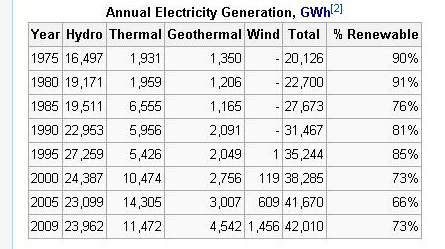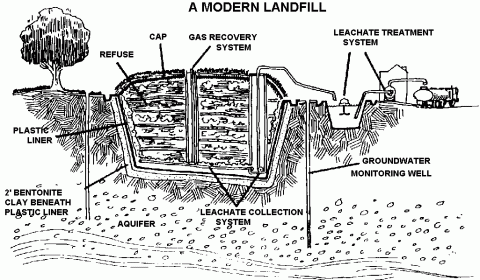Landfills for the future
Blogger: Waste Minimisation Officer & Education Manager and former chairperson for the Wellington Branch Donna Sherlock
The 21st century landfill will ultimately become an energy producing station that can power anything from fleets of cars to thousands of homes.
And although this thinking isn’t new – Marco Polo used to cover sewage ponds to produce bio-gas and the streets of Exeter were once lit by bio-gas in the late 1800s – in the Western world it has gone uptapped for centuries.
In India, it is estimated there are over 2 million bio-gas digesters and many people use these to power their homes
So what is a bio-gas? It’s a gas produced from the breakdown of organic matter in the absence of oxygen. Think of a rotting egg – the whiffy gas produced is a powerful mix of methane (50- 70%) and carbon dioxide (25- 50%).
Biogas is the fastest growing renewable energy trend in Europe, following wind power. However in New Zealand, we’re lagging behind in capturing and re-using the gases that are emitted from our sewage outlets and landfills.
The Auckland city landfill has just started using its bio-gas to power its trucks – and in the future it hopes to power them all. The Christchurch city council powers its QEII swimming pool using bio-gas. And Auckland’s North Shore Rosedale wastewater treatment plant can generate a continuous output of 230kWe.
Although these are small moves in the right direction, we need to seriously start to think about how we can harvest these gases not only from wastewater units and landfills but also piggeries and dairy farms.
This is especially pertinent, given the frightening statistic that our natural gas supply will be exhausted in a few years. Add to this, the emission trading schemes requirement that all landfills must pay for their emissions by 2012 and you have a growing demand for landfills to quickly start re-inventing themselves.
Of course, ultimately these emission charges will be paid by rubbish-users but landfills can help to offset the cost by utilising these gases.
In total we have around 50 landfills across the country. And although our landfills have got bigger (Wellington City used to have two landfills on the go, now it has one), some of them are too small to afford the infrastructure for a gas to electricity conversion plant.
For the past 15-20 years landfills have the obligation to flare off methane emitted as it is a nasty (20 times more damaging than CO2) greenhouse gas, however most have yet to start reusing the gas.
To tap these gases, waste will be placed in an oxygen deprived environment and the gases will be captured with the help of anaerobic digesters.
The real risk to this new energy focus is that we forgot to reduce waste – instead it’s just biffed in the knowledge that it will be used to power our newest gadgets.
We need to re-connect to the socket and form a good understanding of where our energy comes from. At the moment, most people can’t see the wild places and creatures that were sacrificed when they flick on a switch….
Just think of how much energy is required to produce something as simple as a commercially produced tomato.

Over the last 25 years our energy demands have grown as we seek to power our increasingly large homes and a multitude of gadgets. This has put great pressures on our rivers though hydro-dams. In the future, biogas may help to sate these energy demands – however ultimately we need to become more energy –efficient.
First it is hot-housed – to do this much energy is gone into making the house hot.
Fertiliser is applied (again more energy), it is transported from gate to consumer (and possibly imported!) and then it is refrigerated. If we waste say a kilogram of tomatoes a year, we’ve forgone all that energy invested in the kg of crop.
In the UK, DEFRA reported that one third of the groceries we pay good money for goes un-eaten.
Biogas will recoup some of that energy, but a lot is lost though rogue emissions, especially if decay occurs before gas extraction.
Harvesting these gases maybe part of the energy solution – however ultimately we need to see whether recycling and recovery can match these efforts!

